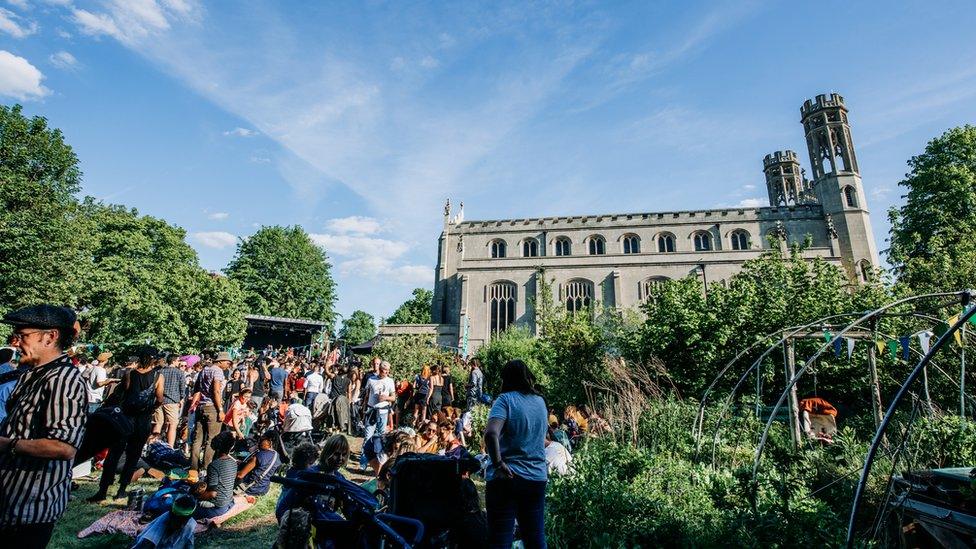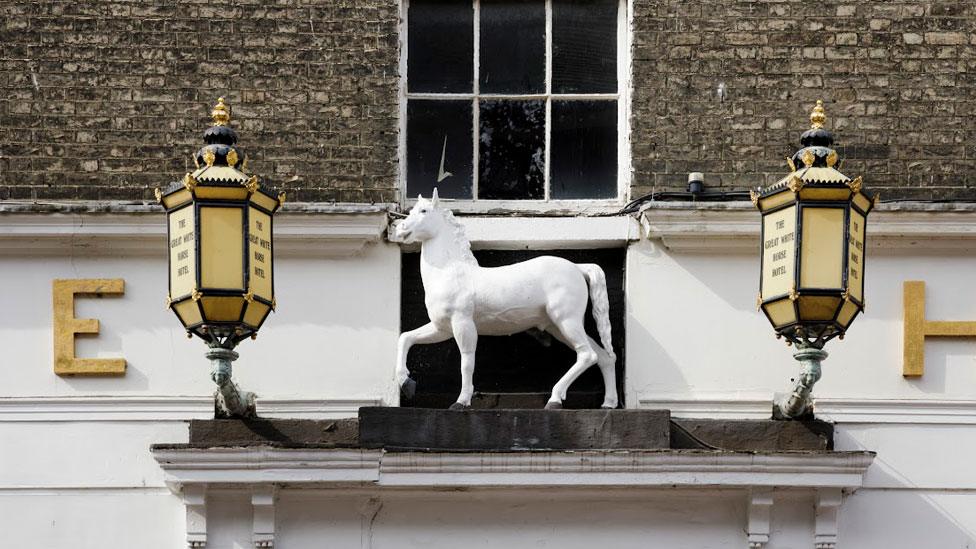Bristol Trinity Centre reflects on being saved by at risk list
- Published

The Trinity Centre is now used for live music, festivals and arts events
Historic England has been praised for the way its At Risk register has helped save buildings across a city.
Sarah Bentley, from the Bristol Trinity Centre, said being on the list meant historic damage - which may have led to the building's closure - was fixed.
The Heritage At Risk Register, which was set up 25 years ago, has helped rescue 22 of some of Bristol's oldest buildings.
Historic England said community efforts are behind all of those successes.
The new 2023 at risk list, external, which includes just under 90 buildings across the West, was released this week.
Ms Bentley said the work on Trinity Centre's Grade II-listed building in Old Market took 51 weeks to complete.
"We fixed the roof, we fixed the iconic towers and the stained glass window," she said.
"There are little white squares in the Bath Stone and that's where the stonemasons had to hand-carve new stones to put in as well as on the pinnacles at the top, which most people probably don't look at.
"I went up there and met with some of the stonemasons and they were talking about the intrinsic nature of re-carving Bath Stone. It's beautiful."
'Communities work hard'
Historic England said about 6,800 entries have been removed from the At Risk since 1998, including Arnos Vale Cemetery in south Bristol, which was taken off in 2010.
John Ette, from Historic England, said it was a "testament to all the work from the communities and individuals who are behind everyone of these successes".
Historic England chief executive Duncan Wilson said: "After a quarter of a century of the Heritage at Risk Register, we are celebrating how many places have been saved and continue to find new ways to involve local people in caring for and enjoying their heritage."

Follow BBC West on Facebook, external, X, external and Instagram, external. Send your story ideas to: bristol@bbc.co.uk , external
Related topics
- Published9 November 2023
